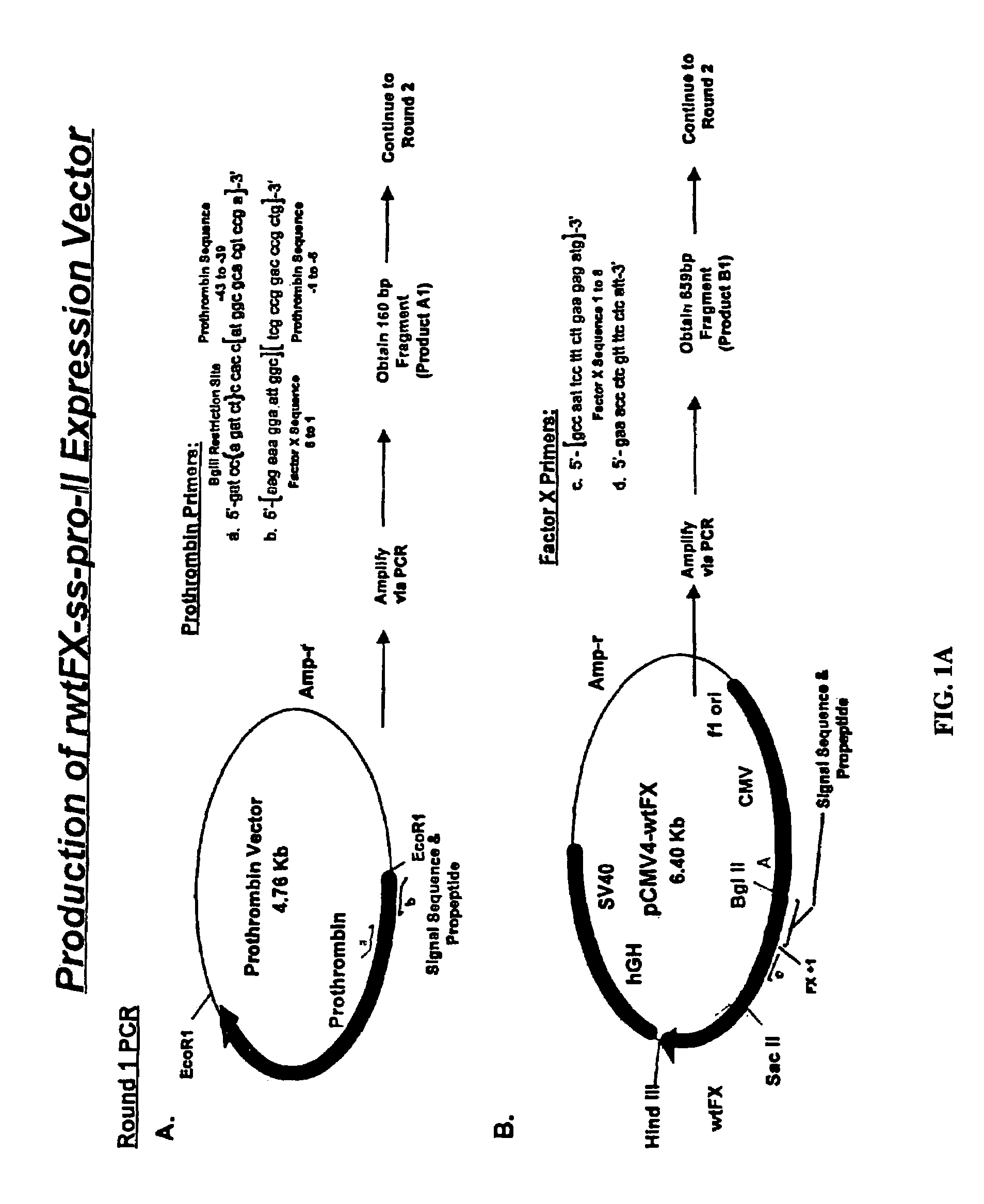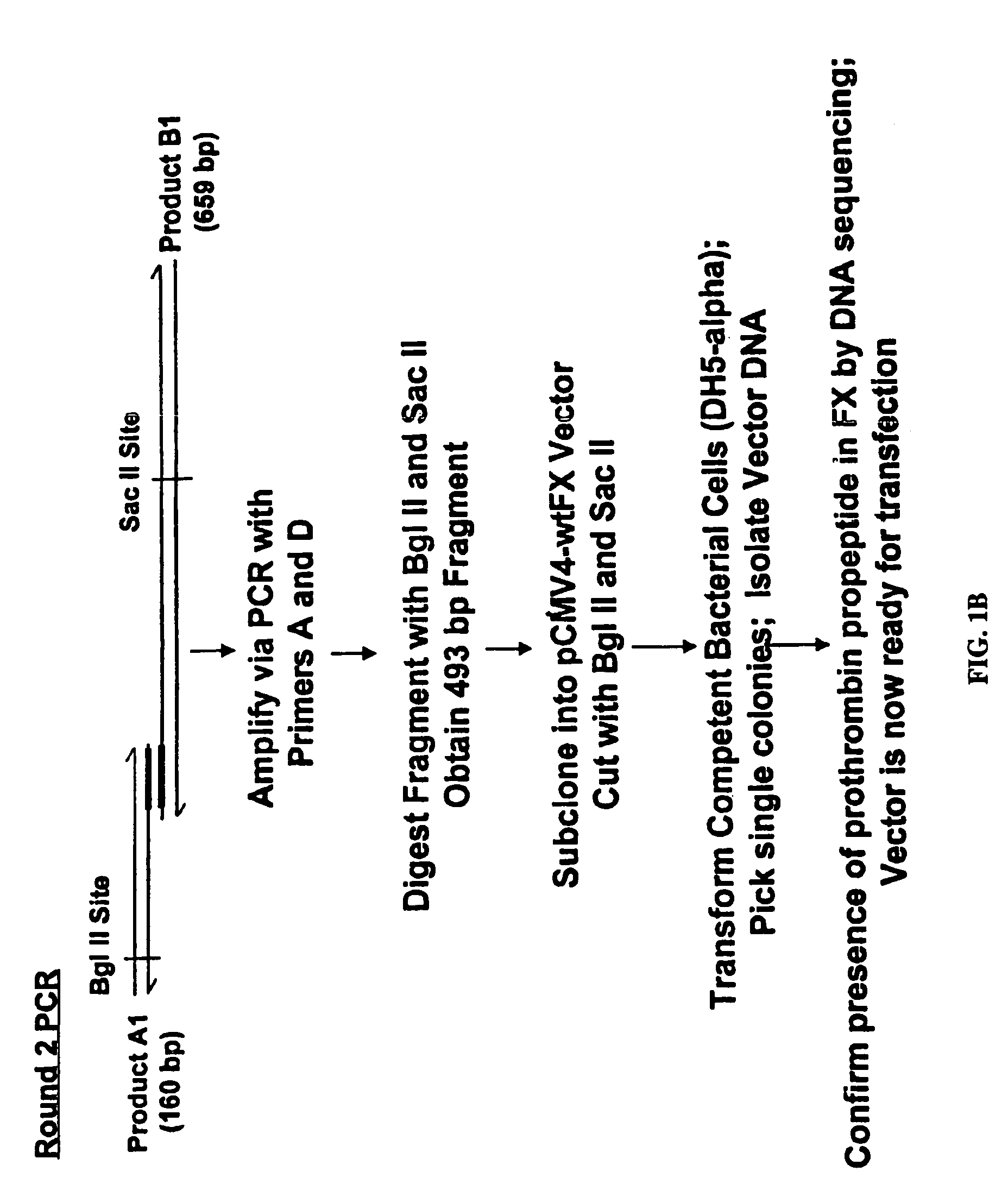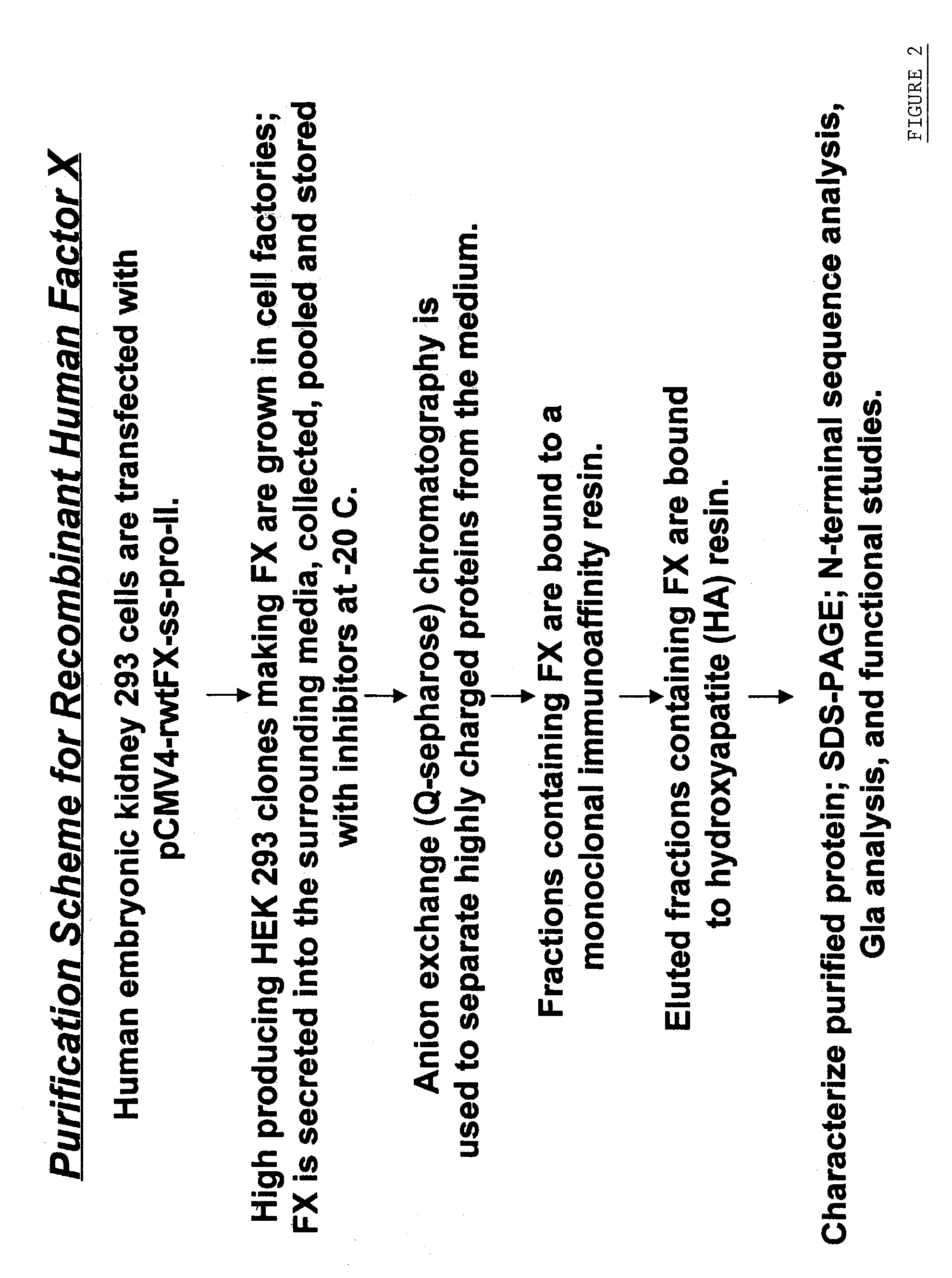Enhanced gamma-carboxylation of recombinant vitamin K-dependent clotting factor
a technology clotting factor, which is applied in the field of enhanced gamma-carboxylation of recombinant vitamin kdependent clotting factor, can solve the problems of inefficient -carboxylation, less than desirable protein yield, and less than satisfactory solution for studies involving macromolecular complex assembly
- Summary
- Abstract
- Description
- Claims
- Application Information
AI Technical Summary
Benefits of technology
Problems solved by technology
Method used
Image
Examples
example 1
Construction of Chimeric DNA and Production of Protein
[0109]Chimeric cDNA comprising DNA encoding prothrombin propeptide fused to mature Factor X DNA was constructed as described in FIG. 1. The generation of gamma carboxylated Factor X protein was accomplished by transfection of human embryonic kidney 293 cells with the chimeric DNA as described in FIG. 2. The procedures for generation the chimeric DNAs of the invention are well known in the art and are described, for example, in Sambrook et al. (1989, Molecular Cloning: A Laboratory Manual, Cold Spring Harbor Laboratory, New York) and in Ausubel et al. (1994, Current Protocols in Molecular Biology, John Wiley & Sons, New York).
[0110]The precise experimental protocols used for the generation of fully gamma carboxylated Factor X protein are described in Example 2.
example 2
Enhanced Gamma Carboxylation of Recombinant Factor X Using the Prothrombin Propeptide
[0111]The present experiments were performed in order to optimize the expression of fully γ-carboxylated rFactor X and to determine the significance of the differential binding affinities of propeptide sequences for the γ-carboxylase. To this end, a chimeric Factor X cDNA harboring the prothrombin signal sequence and propeptide was created and transfected into HEK 293 cells. Stable transfectants were selected and expanded, and recombinant Factor X was purified and analyzed for γ-carboxyglutamic acid content. The data indicate that expression of rFactor X using the prothrombin signal sequence and propeptide results in much higher yields of fully γ-carboxylated material and is thus superior to the native Factor X signal sequence and propeptide. In addition, our results indicate that the affinity of the γ-carboxylase for the propeptide region can greatly influence the extent of γ-carboxylation. These d...
example 3
Amino Acids Responsible for Reduced Affinities of Vitamin-K Dependent Propeptides for Gamma Carboxylase
[0131]As noted elsewhere herein, the binding of the gamma-glutamyl carboxylase to its protein substrates is mediated by a conserved 18 amino acid propeptide sequence found in all vitamin K-dependent proteins. It has recently been shown that the apparent affinities of the naturally occurring propeptides for the carboxylase vary over a 100-fold range and that the propeptide of bone Gla protein has severely impaired affinity for the carboxylase (Stanley et al., 1999 J. Biol. Chem. 274:16940–16944). In the present example, a consensus propeptide sequence that binds tighter (Ki=0.43 nM) to the carboxylase than any known propeptide sequence is reported. Comparing the factor IX propeptide to the propeptides of protein C, bone Gla protein, and prothrombin, the weakest binding propeptides, facilitated the prediction of the residues responsible for the relative weak binding of these substrat...
PUM
| Property | Measurement | Unit |
|---|---|---|
| Fraction | aaaaa | aaaaa |
| Fraction | aaaaa | aaaaa |
| Fraction | aaaaa | aaaaa |
Abstract
Description
Claims
Application Information
 Login to View More
Login to View More - R&D
- Intellectual Property
- Life Sciences
- Materials
- Tech Scout
- Unparalleled Data Quality
- Higher Quality Content
- 60% Fewer Hallucinations
Browse by: Latest US Patents, China's latest patents, Technical Efficacy Thesaurus, Application Domain, Technology Topic, Popular Technical Reports.
© 2025 PatSnap. All rights reserved.Legal|Privacy policy|Modern Slavery Act Transparency Statement|Sitemap|About US| Contact US: help@patsnap.com



